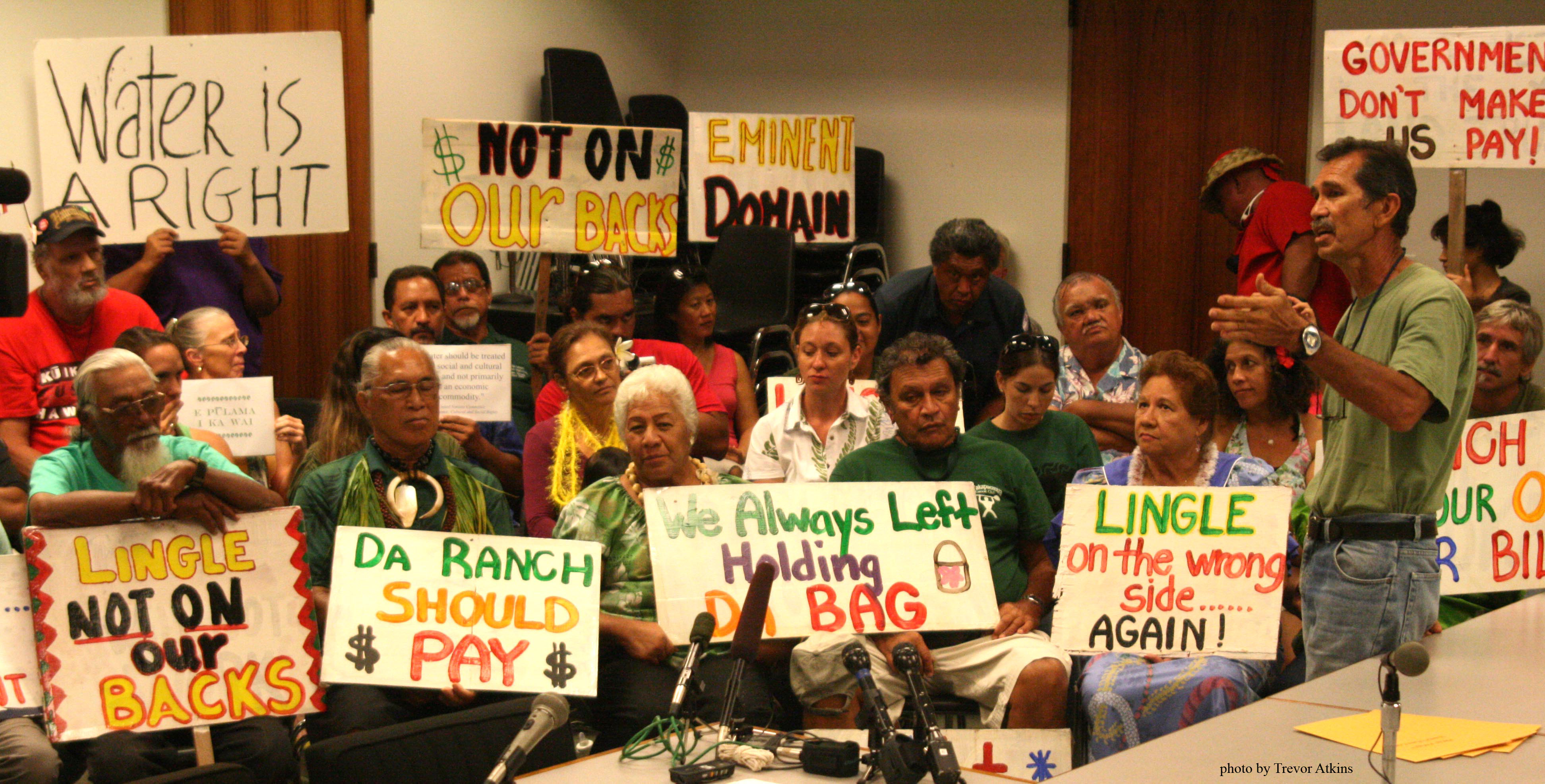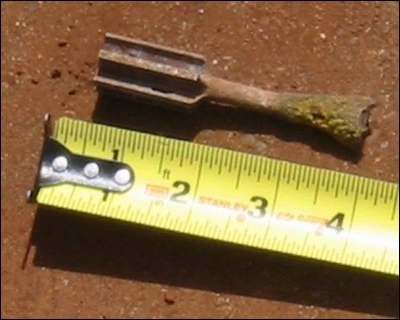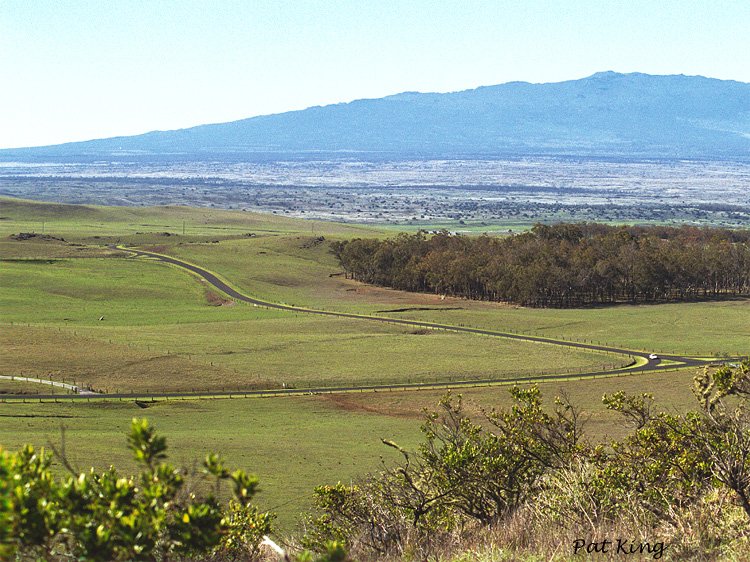Blog
News, updates, finds, stories, and tidbits from staff and community members at KAHEA. Got something to share? Email us at: kahea-alliance@hawaii.rr.com.
- In 1998, the Hawai’i State Auditor issued a report criticizing the UHIFA’s and BLNR’s management of Mauna Kea. The Auditor found that the UHIFA’s focus on telescope construction was “at the expense of neglecting the site’s natural resources.” Among the effects of the construction were: the damage or destruction of historic sites and Hawaiian family shrines; the destruction of the Wekiu Bug’s habitat; trash and construction debris left on the summit; and abandoned facilities and equipment.
- A court-ordered EIS completed by NASA in February 2005 concluded of the telescopes: “From a cumulative perspective, the impact of past, present, and reasonably foreseeable future activities on cultural and biological resources is substantial, adverse and significant…
Molokai: residents forced to pay 178% more for water
From Marti:
Big Mahalos to the people of Molokai for making the journey to Honolulu to raise awareness about Molokai Ranch’s new ploy to exploit cash for water. I was shocked to hear that Gov. Lingle allowed Molokai Ranch to raise residents’ water rates 178% or risk losing all water services. HEWA! Access to clean water is a basic human right. Molokai Ranch took on the responsibility of providing water to people (for a profit) all these years and now that profits are down they just want to close up shop. That’s just wrong.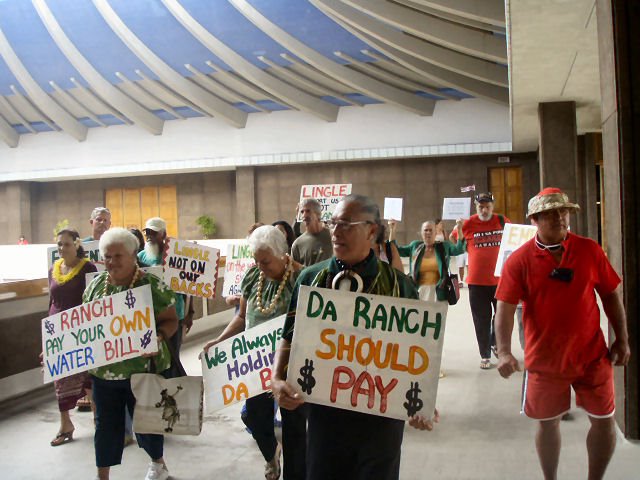
Rep. Carroll (D-Molokai) said it herself, “Molokai Ranch should not simply walk away from legal and moral obligations” to provide water service to the residents of Molokai.
There is word for what Molokai Ranch is doing, it’s called: extortion. Good for Molokaiians for sticking up for themselves. If this ridiculous rate increase is allowed to stand, then it sets a bad precedent for all of us in Hawaii who pay to have water pumped into our homes. Someday soon they are going to come knocking on all of our doors threatening to cut off our water if we don’t pay them a hundred times more.
A statement from the residents of Molokai:
In May, Molokai Ranch, citing financial impossibility but providing no financial evidence, suddenly announced the company would terminate its water and sewage utility services at the end of August. In July, The Department Of Health said: “The lack of a sustained and reliable source of safe drinking water in West Molokai will create a substantial danger…an imminent peril to the public health and safety.” By threatening to cut off an essential lifeline to the Molokai community, Molokai Ranch created a manmade and calculated crisis in order to avoid financial responsibility.
Without conducting a physical or financial audit of the utilities, the PUC bought into the Ranch’s threats, sided against the ratepayer, and claimed it “had no choice” but to raise the rates of Waiola O Molokai, Inc water utility by an unprecedented 178%. The people of Molokai cannot afford to pay such exorbitant rate increases, and should not be forced to subsidize mismanaged utilities.
Not only was the rate increase unprecedented and unjustified, but the rate review and approval process was fundamentally flawed. The PUC, which should be acting as a regulatory agency for the utilities, assumed an unprecedented role and filed for the rate increase on behalf of the utilities, as the Ranch claimed poverty (while still refusing to disclose financial records) and refused to file its own proceedings for a rate increase. The PUC also disallowed Molokai ratepayers to intervene as a formal party to the proceedings.
Compounding the PUC’s procedural errors, the DCCA then failed to advocate on behalf of the affected ratepayers. A 25% increase is normally the cap for a rate increase; instead of upholding this policy on behalf of the local consumer, the government agencies appeased the demands of a foreign-owned business and arbitrarily approved a 178% increase knowing that Molokai ratepayers cannot afford to pay such an egregious rate increase.
The Molokai community has filed a formal complaint with the Office of the Ombudsman to investigate the PUC for breaching a duty to ensure that all rates, fares, and charges are “just and reasonable” and to investigate the DCCA for breaching a duty to “represent, protect, and advance the interests of all consumers, including small businesses, of utility services”. The Molokai community asks that the August 14, 2008 rate increase approval be considered null and void.
The Molokai community asks that Governor Lingle, who oversees both the PUC and the DCCA, overturn the PUC’s rate approval and demand a fair and just rate review process. Molokai Ranch should be asking for a rate increase instead of the PUC, and the people of Molokai should be granted legal standing as a participant in the rate review process.
(photo by Trevor Atkins)
"Unearthing Burial Laws" in Honolulu Weekly
From Joan Conrow’s excellent piece on iwi issues in the Weekly, “Unearthing Burials“:
But the construction hasn’t stopped, those involved in burial issues say, because the law has been very misapplied and misinterpreted, and top administrators have failed to allocate sufficient funding for the State Historic Preservation Division (SHPD) to do its job.
“If you don’t want it to work, you should be honest about it, not cripple it with inadequate funding and staffing and what looks like an attempt to make it collapse from within,” Murakami said.
Efforts also have been made to get the state Legislature to provide oversight of SHPD, which Murakami said is plagued with “systemic and chronic” problems, but that hasn’t been a priority with lawmakers.
“Essentially, the only thing keeping developers from doing what they want are major conflicts and lawsuits,” Murakami said. And that’s exactly what’s happening at Naue, on Kaua’i’s north shore, where several demonstrations have been held. The NHLC is seeking an injunction to stop Joe Brescia, a California developer, from building a house on an oceanfront site where 31 burials have been found. A hearing is set for Thursday, August 14 in Kaua’i’s Fifth Circuit Court.
The key issue of the suit, Murakami said, is that the Kaua’i Island Burial Council determined the burials should be preserved in place, but the SHPD is taking the position that capping them in concrete and building a house on top constitutes preservation.
education or desecration, your pick?
“They’re forcing them to make a decision between education and desecration, and that’s not proper.” -Kealoha Pisciotta, Mauna Kea Anaina Hou
Giant Telescope Eyes Site on Mauna Kea, front page of the Sunday Advertiser, as Senator Inouye proposes undefined “scholarships for Native Hawaiians” as mitigation for a proposed new two-acre observatory facility on the last pristine plateau of Mauna Kea.
Mauna Kea is both ecologically unique and culturally sacred, and we know that telescope operation and construction have already had a significant impact, and that the UH Institute for Astronomy (UHIFA) have not done an adequate job of protecting the natural and cultural resources of the summit over the last 30 years of telescope development. The UHIFA also pays only $1 in lease monies to the people of Hawai`i for their use of the summit.
NASA already offered $1.85 million towards Native Hawaiian causes, a gesture that Native Hawaiians noted did not address the actual desecration of the mountain. The UHIFA has continually ignored the call of hundreds of Hawaiian citizens to halt further exploitation and development of Mauna Kea’s summit, and to assess cumulative damage to cultural and environmental resources before proceeding with future development.
But an undefined amount in scholorships? Should totally smooth things over.
Declaration on the Rights of Indigenous Peoples
From Evan:
The passage of the Declaration on the Rights of Indigenous Peoples (“Declaration”) late last year by the UN General Assembly was a historic and monumental step by the global community in recognizing the claims of all indigenous people. Native Hawaiians, the original and continuous inhabitants of the islands of Hawai`i, derive specific rights from the force of this international Declaration. Here are a few excerpts from the Declaration that our readers may find pertinent.
Article 1 of the Declaration mandates:
Indigenous people have the right to the full enjoyment, as a collective or as individuals, of all human rights and fundamental freedoms as recognized in the Charter of the United Nations, the Universal Declaration of Human Rights and international human rights law.
Article 26 of the Declaration mandates:
1. Indigenous peoples have the right to the lands, territories, and resources which they have traditionally owned, occupied or otherwise used or acquired.
2. Indigenous peoples have the right to own, use, develop, and control the lands, territories and resources that they possess by reason of traditional ownership or other traditional occupation or use, as well as those which they have otherwise acquired.
3. States shall give legal recognition and protection to these lands, territories and resources. Such recognition shall be conducted with due respect to the customs, traditions, and land tenure systems of the indigenous peoples concerned.
According to the United Nations Permanent Forum on Indigenous Issues, “the Declaration outlaws discrimination against indigenous peoples, promotes their full and effective participation in all matters that effect them, as well as their right to remain distinct and to pursue their own visions of economic and social development.” International Human Rights scholar and Native Hawaiian attorney Mililani Trask explained, “although it is not a binding treaty, it is a statement of intent and understanding intended to support and expand upon the body of international human rights law as it affects indigenous people.”
Although the Declaration passed the United Nations General Assembly by an overwhelming majority of 143 nations in favor, four against, and eleven abstentions, the United States along with Australia, Canada, and New Zealand, comprised the only four votes in opposition. Nonetheless, the United States is party to many international treaties that recognize the ability of groups to sustain their cultural identities including: the International Covenant on Civil and Political Rights (“ICCPR”), which the United States and 144 other nations have ratified, the International Convention on the Elimination of All Forms of Racial Discrimination (“ICEARD”), ratified by 155 nations including the United States, and the Charter of the Organization of American States (“OAS”), ratified by the United States and 34 other nations. Article VI, clause 2 of the U.S. Constitution mandates that treaties ratified by the United States are part of the supreme law of the land and thus, binding.
To learn more about the Declaration on the Rights of Indigenous Peoples and the International Working Group on Indigenous Affairs visit http://www.iwgia.org/sw248.asp
playing games with graves
From Evan:
Playing Games With Graves: This is what we appears to be happening at every turn here in Hawai`i. Burials are sacred and honoring our Kupuna is our responsibility. By honoring the past, we are connecting to those that have come before, acted as stewards and literally given their life to the land. Yet, the recent events at Naue Point on Kauai have brought our attention, once again, to the fact that some people just don’t get it.
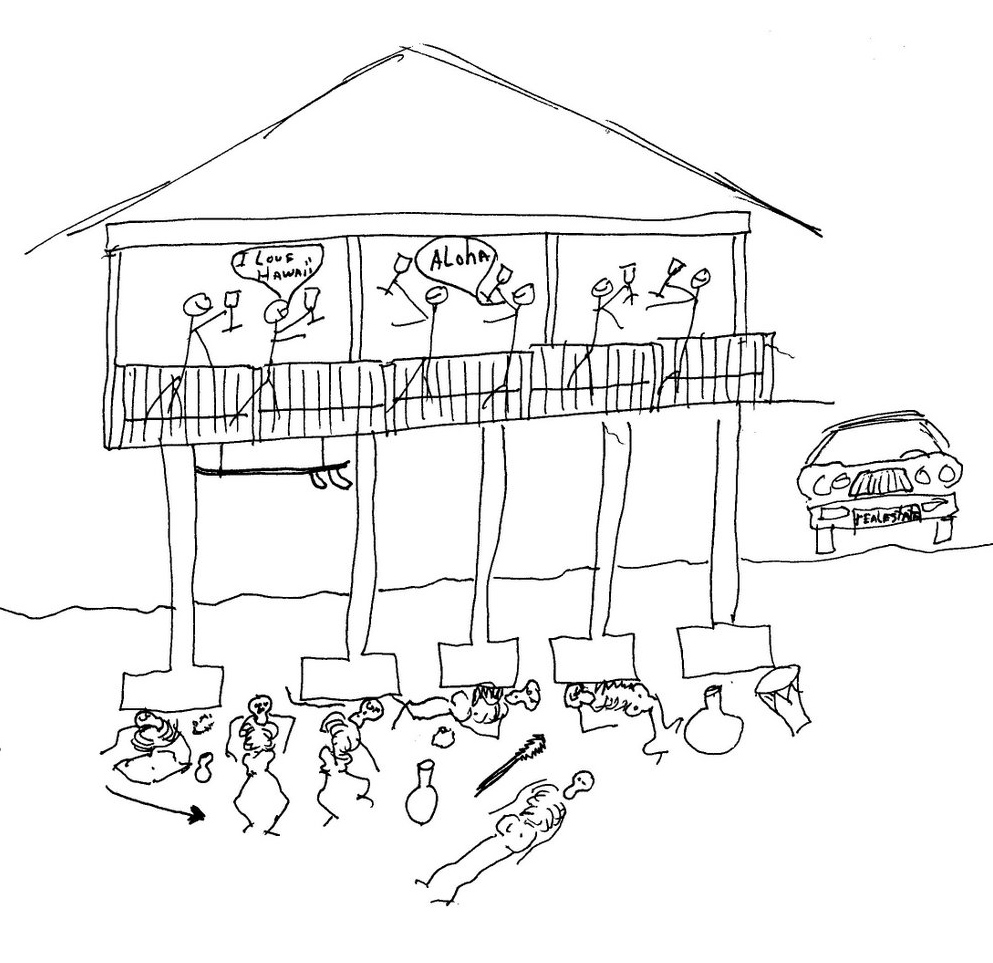
On Kauai, the community members have stood tall in the face of eroding burial laws and corrupt processes for what they know is right. They need to be commended and this story needs telling. The community on Kauai is not alone although it may feel that way sometimes. The ongoing debacle at the Ward Villages construction site is yet another reminder of all that is inept about historic preservation these days.
Detours in the current legal framework allow for developers to take the easy way out with incomplete and ineffective archaeological reports that open the door to the permitting process. The difference between a “previously identified” and an “inadvertently discovered” burial can save developers loads of money, while also being the key that opens the door to development. Regardless of their trickery, it is an abomination of the spirit of the current burial law.
As one colleague recently questioned, “Previously identified by who? Everyone knows there are burials all over the beach in Hawai`i, especially on Kauai and Oahu.” Unfortunately everyone but the decision makers have gotten the message. Disarray at the State Historic Preservation Division and a City and County level permitting processes that, on Oahu has ignored an 18 year old resolution calling for detailed oversight of historical remains, continue to pave the way for gross unfairness in the handling of our most dearly departed. The process that results often resembles little more than a rubber stamp.
The situation on Kauai has brought many of these inequities to the surface and we need to take greater notice in all that is not working. After the developer was forced to preserve the burials in place by the island burial council; a scheme to build on top of the burials somehow got approved. As a result of the ongoing protests, the police stepped in to use criminal desecration statutes but the county prosecutor was unwilling to go along. OHA even took notice and asked SHPD to file a cease and desist order, which has not yet occurred. And now, Native Hawaiian Legal Corporation, along with OHA, is stepping up to take legal action. The question that remains: Why is it that we have to bring our Kupuna out of the ground and into court time and time again?
Perhaps it is the the loopholes in the burial laws that keep this mockery ongoing. Less than whole archaeological reports and a general mistrust for the entire historic preservation process are surely among the culprits as well. Making change in the current atmosphere will not be easy. One way to persevere through these challenges is to recognize that we are not isolated communities dealing with these issues, but a people connected by a common purpose. A purpose to keep sacred all that has come before and cherish all that is sacred for those yet to come. This we can do. This we must do. One step at a time, together.
self help: restoring stream flow.
From Alan Murakami of the Native Hawaiian Legal Corporation, on behalf of East Maui Taro farmers and Na Moku Aupuni O ko`olau Hui:
Background. The law provides for various appropriate remedies for dealing with and managing serious conflicts over uses of stream water. The biggest conflicts over stream water uses have festered for years because of the massive diversions of East Maui streams by East Maui Irrigation Company for decades. EMI diverts as much water for its plantation uses in central Maui as the average amount that all of O`ahu consumes. The biggest conflict involves the water EMI is taking illegally from streams that feed taro patches and support native stream life vital to the preservation of Hawaiian traditional and customary practices in the cultural landscapes of Wailuanui and Honopou Valleys.
State Agency Delays. After 7 years of patiently waiting for the implementation of the appropriate administrative remedies theoretically available to it, Na Moku Aupuni O Ko`olau Hui’s leadership has been repeatedly frustrated by the inaction of both the Board of Land and Natural Resources and the Commission on Water Resources Management in performing its public trust functions designed to protect the public interest and the water rights of East Maui taro farmers and subsistence gatherers.
Those functions are based on the presumption that these agencies will respect and enforce clear law on water rights held by these farmers and gatherers, which are explicitly protected by the Hawai`i Constitution, the state Water Code, and a long line of water case law. These laws not only respect these practices of these cultural practitioners, but provide the basis for demanding that EMI demonstrate the ABSENCE of injury to these practitioners BEFORE diversions are allowed. Despite holding all the legal advantages of these laws, the BLNR and the Water Commission have delayed, without explanation or justification, the timely implementation of these laws, leading to chronic and severe cultural and monetary damages amongst farmers and gatherers trying to enforce their rights.
Frustration. For example, the CWRM has, without explanation or legal justification, delayed action on Na Moku’s pending request to restore stream flows to support constitutionally protected water rights of taro farmers and subsistence gatherers since 2001, although the governing statute demands action within 6 months. Similarly, like its sister agency, the BLNR has allowed EMI to continue diversions from East Maui without regard for these same farmers and gatherers, even after a year since it supposedly acted to direct its staff to protect the water rights of those affected. The DLNR has failed to fully implement the year-old order of the BLNR, which was designed to provide farmers immediate interim relief from the effects of the existing EMI diversions.
Self Help. On July 9, 2008, taro farmers observing water being improperly diverted from Wailuanui Stream unilaterally released water from EMI diversions. The affected practitioners could not wait any longer, having suffered failed taro crops due to insufficient irrigation water, while EMI diversions took the water that would have savedand supported their crops. This exercise of their constitutional rights did not follow the procedure outlined in either agency’s timetable for action.
Nevertheless, the releases from EMI’s diversion works are entirely consistent with the continuation of traditional and customary practices followed by their ancestors for growing taro and gathering from the streams. It is just that the BLNR and CWRM did not, and apparently chose not to, promptly protect the superior water rights of these practitioners as the law would otherwise require. Their failure to timely implement the law directly resulted in the level of frustration felt by all practitioners in East Maui who have attempted to patiently wait for the water to which they are entitled in the affected streams.
Na Moku position. The taro farmers and subsistence gatherers who took this unprecedented action in the midst of the delayed proceedings did so without prior approval of Na Moku. Na Moku has continued to make itself available to state agencies, in all available administrative processes, in efforts to seek the orderly restoration of streams illegally diverted by EMI. However, it cannot and does not condemn the unilateral releases of water into the streams last week by taro farmers frustrated by long, and unexplained, delays by state agencies. After all, tenants of an ahupua`a do have the reasonable right to access areas within the same ahupua`a to continue their traditional and customary practices, including taro growing and subsistence gathering.
Na Moku affirms its belief that these releases reflect the reasonable and overdue exercise of these rights, protected under the Hawai`i Constitution, statutes, and case law, with which responsible state agencies cannot and should not interfere. This responsibility for this resort to self help rests entirely with the BLNR/DLNR and the CWRM. Na Moku and the taro farmers who are now acting are all frustrated by these agencies failure to act timely enough to save their taro crops. Moreover, successful taro farmers contribute heavily to enhancing Hawai`i’s food supply, its food security and long-term sustainability. Each agency should not exacerbate building tensions by any heavy-handed means to reacting to these farmer actions. The farmers are only reacting to belated processes each agency has not timely nor properly implemented.
In the spirit of moving forward in this unprecedented circumstance, Na Moku stands ready to cooperate with the CWRM and the BLNR/DLNR to continue any reasonably prompt process to assure that the rights of its members are respected and timely enforced.
Thar She Blows: DU on the move on the Big Island
“Waiki`i Ranch Dust Samples Show No Depleted Uranium” is apparently receiving a skeptical response from local and international scientific experts, according to our friends at Malu `Aina on Hawai`i Island.
The report posted a “statistically insignificant” amount of depleted uranium (DU) in the community of Waiki`i, 8 – 10 miles downwind of Pohakuloa Training Area (PTA), where the Army admitted in 2006 to using DU spotting rounds for its Davy Crockett nuclear weapons system. The test is based on a sample taken by Waiki`i Ranch Depleted Uranium Project Manager, David Bigelow, and sent to a laboratory in England for analysis.
From Malu `Aina guys:
Dr.Rosalie Bertell, PhD, remarks that the lab report “actually says that there IS DU in the sample. There should be zero. It is irrelevant that it is ‘not significant.’” Dr. Bertell — who has been honored by the U.N.as a statisticisn, epidemiologist, and member of the Science Advisory Board, International Joint Commission of the U. S. and Canada — goes on to say: “What you really want to know is whether or not the uranium found in the sample has been fired. This means electron spectroscopy.” Dr. Pang is also skeptical about the term “statiscally insignificant.” He claims that the laboratory’s reading of 1/100 DU, allowing for a measurement error of 1%, could mean the presence of 2% DU in the sample instead of its “zero” interpretation.
Dr. Lorrin Pang, MD, MPH, comments: “it is hard to do statistics with a sample of one,” referring to the single dustpan sample depicted on the front page of the newspaper’s July 22 issue. Dr. Pang, speaking as private citizen, is retired from the Army Medical Corps, is on the Best Doctors of America list 2006-8, and a consultant to the World Health organization (WHO) since 1985. Russell Takata, state radiation chief, is also on record as questioning WRHOA’s methodology.
To label tests a “bust” and conclude that “preliminary results find no health hazard” is simply not supported by fact. Closer to the truth is that we have been told little or nothing about whatever tests may have been conducted by the state or federal governments. Mr Takata refers to “preliminary reviews of about 90% of test results” but gives no data. What about the other 10%? The Army allegedly tested 800 dust samples, but these results have yet to be made available to the state or the public. All of this adds up to sweeping claims of safety, while providing no hard data to back them up. This has been a repeated pattern over the past several years: claims but no data.
The Hawaii County Council by a vote of 8-1 on July 2nd, passed resolution 639-08, calling for the halting of all live-fire that could spread military radiation and independent, comprehensive, testing

